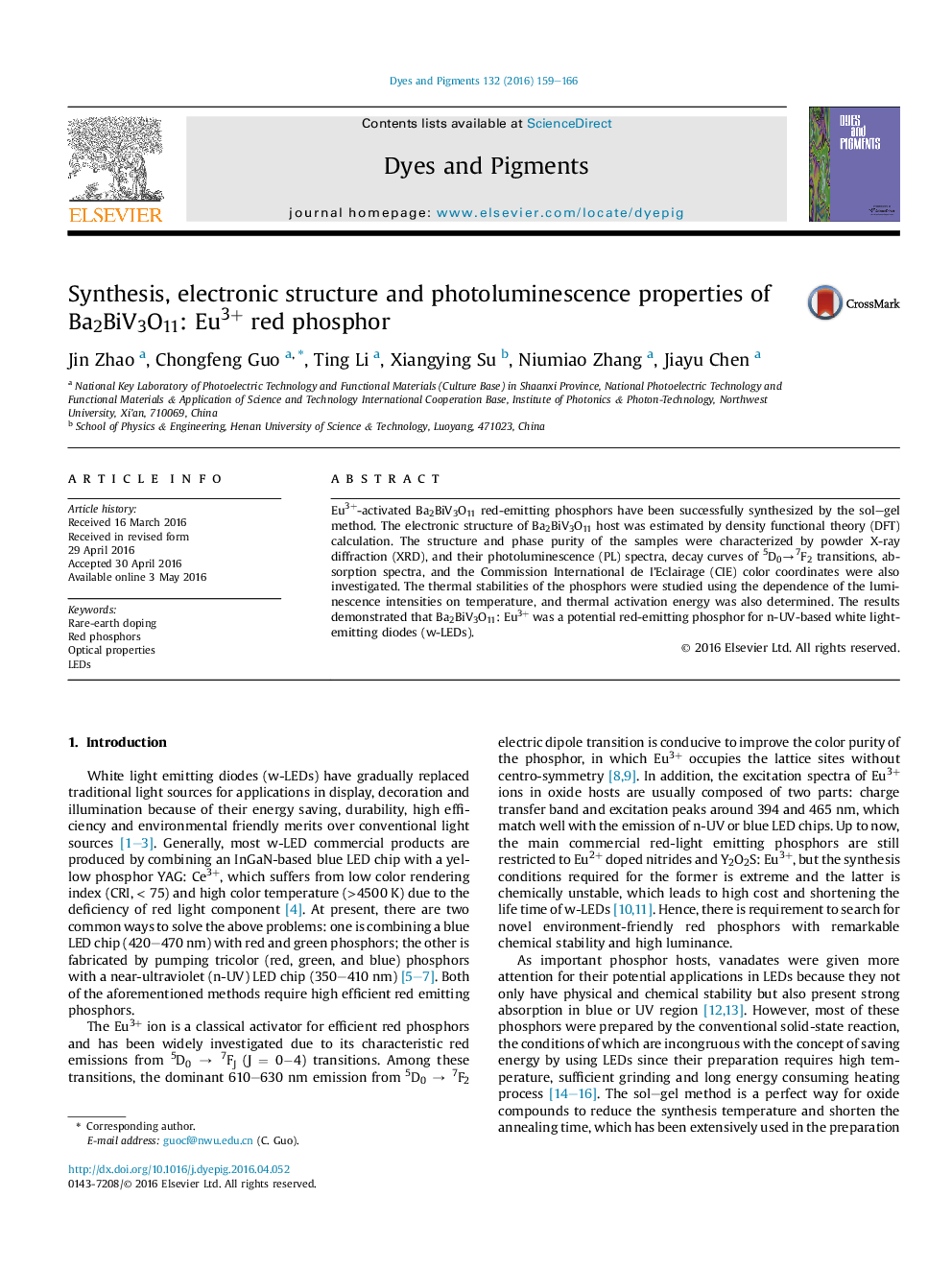| Article ID | Journal | Published Year | Pages | File Type |
|---|---|---|---|---|
| 175330 | Dyes and Pigments | 2016 | 8 Pages |
•Ba2BiV3O11: Eu3+ phosphors were prepared by the sol–gel method.•The electronic structure of Ba2BiV3O11 was estimated by density functional theory.•Ba2BiV3O11: Eu3+ can be excited at 394 and 465 nm and emit red light.
Eu3+-activated Ba2BiV3O11 red-emitting phosphors have been successfully synthesized by the sol–gel method. The electronic structure of Ba2BiV3O11 host was estimated by density functional theory (DFT) calculation. The structure and phase purity of the samples were characterized by powder X-ray diffraction (XRD), and their photoluminescence (PL) spectra, decay curves of 5D0→7F2 transitions, absorption spectra, and the Commission International de I’Eclairage (CIE) color coordinates were also investigated. The thermal stabilities of the phosphors were studied using the dependence of the luminescence intensities on temperature, and thermal activation energy was also determined. The results demonstrated that Ba2BiV3O11: Eu3+ was a potential red-emitting phosphor for n-UV-based white light-emitting diodes (w-LEDs).
Graphical abstractBand structure (a) and the crystal structure (b) of Ba2BiV3O11 as well as PL spectrum of Ba2BiV3O11: 0.6Eu3+ with its CIE coordinates (c).Figure optionsDownload full-size imageDownload as PowerPoint slide
